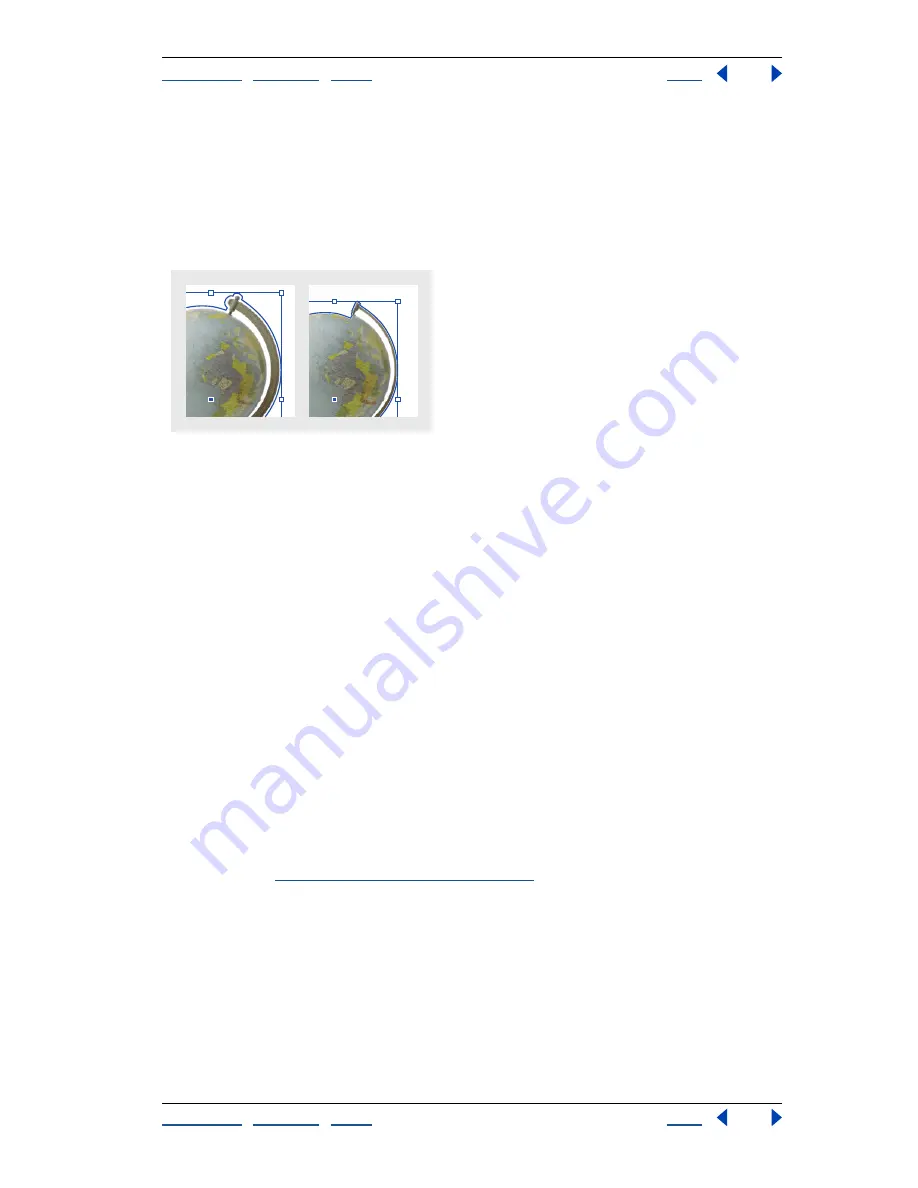
Using Help
|
Contents
|
Index
Back
265
Adobe InDesign Help
Arranging and Combining Objects
Using Help
|
Contents
|
Index
Back
265
Inset Clipping Path
Type a value to specify how far to shrink the resulting clipping path
relative to the clipping path defined by the Threshold and Tolerance values. Unlike
Threshold and Tolerance, the Inset Frame value does not take lightness values into
account; instead, it uniformly shrinks the shape of the clipping path. Adjusting the Inset
value slightly may help hide stray pixels that could not be eliminated by using the
Threshold and Tolerance values. Enter a negative value to make the resulting clipping path
larger than the clipping path defined by the Threshold and Tolerance values.
Inset frame at -0p1 (left) and 0p3 (right)
Invert
Select to switch the visible and hidden areas, by starting the clipping path with the
darkest tones.
Include Inside Edges
Select this option to make areas transparent if they exist inside the
original clipping path, and if their lightness values are within the Threshold and Tolerance
ranges. By default, the Clipping Path command makes only the outer areas transparent, so
use Include Inside Edges to correctly represent “holes” in a graphic. This option works best
when the brightness levels of areas you want to make transparent don’t match any areas
that must be visible. For example, if you choose Include Inside Edges for a graphic of silver
eyeglasses, and the lenses become transparent, very light areas of the eyeglass frame may
also become transparent, such as its specular highlights. If areas become transparent
when that wasn’t your intent, try adjusting the Threshold, Tolerance, and Inset Frame
values.
Restrict to Frame
Select this option to create a clipping path that stops at the visible
edge of the graphic. This can result in a simpler path when you use the graphic’s frame to
crop the graphic.
Use High Resolution Image
Select this option to calculate transparent areas using the
actual file, for maximum precision. Deselect this option to calculate transparency based on
the screen display resolution, which is faster but less precise. This option isn’t available if
you chose Alpha Channel, because InDesign always uses an alpha channel at its actual
resolution. (See
“Specifying transparency” on page 288
.)
To create a clipping path using an imported graphic’s embedded paths:
1
Select an imported graphic, and choose Object > Clipping Path.
2
Choose Photoshop Path, specify the following options, and then click OK:
Path
Choose the path that you want to use. If the Path menu isn’t available, only one path
was saved with the graphic, and InDesign is already using it.
Inset Frame
Type a value to specify how far to shrink the resulting frame. You can use this
option to “tighten” the path around the graphic.
Invert
Select this option to switch the visible and hidden areas.






























